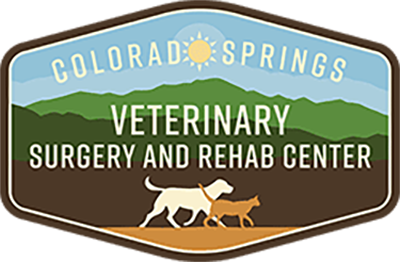Cranial Cruciate Ligament (CrCL) injury is the most common orthopedic (bone, muscle, or joint) injury in dogs. It is equivalent to a torn Anterior Cruciate Ligament (ACL) in a person. The treatment for a dog’s torn CrCL can be highly effective, and in many cases your pet can return to totally normal function. It is important to address the injury right away because inflammation and arthritis develop very rapidly after this injury.
About the injury
The Cranial Cruciate Ligament is critically important in keeping the knee stable for every activity your dog does. When the ligament is torn, small amounts of abnormal movement occur within the joint, placing tremendous strain on tissues in the knee. Consequences often include arthritis, injury to the meniscus (cartilage pad in the center of the joint), and significant pain. For these, and many other reasons, it is very important to seek rapid evaluation and early treatment. Most dogs injure their CrCL in early to mid-adulthood, with many years of active life ahead of them.

What to do in case of injury
There are many treatment options. First, it is critical to have a thorough examination to assess the injury and discuss individualized treatment options. Depending on the patient and the severity of injury, non-surgical therapies may be effective. Joint health supplements and anti-inflammatory and/or pain medications will help. In many cases, surgery may ultimately become necessary to stabilize the knee, provide comfort, and allow for a return to normal activity. Because of space limitations, we will focus on surgical treatment, which is the most common recommendation.
Surgical recommendations
Because this is such a common injury, there have been numerous studies on the effectiveness of various surgical methods have been tried. Currently the “gold standard,” or best-yet method, is a surgery called a TPLO. TPLO stands for Tibial Plateau Leveling Osteotomy. The surgery requires individual measurements of each patient and the surgery is customized to each individual. Ultimately instead of attempting to replace the ligament, TPLO uses physics and the dog’s own anatomy to minimize the abnormal movement in the knee. In this way, the constant inflammation and pain are eliminated. TPLO surgery has proven very successful. It can even prevent or stop the progression of arthritis in many patients.
Outcome and expectations
Like any surgery, post-operative recovery requires a period of healing before they can have normal activity. In the case of TPLO, recovery is around 6-8 weeks, followed by a gradually increase in activity. After recovery, there are not any restrictions on level of activity. Unlike some other surgical repair methods, TPLO provides a permanent stability, and repeat surgeries are quite rare.
In Summary…..
Your pet’s comfort and quality of life are some of the most important factors we consider during discussions and recommendations. We take great pride in trying to maximize those and other factors with you. We aim to provide the very best treatments and care possible.

